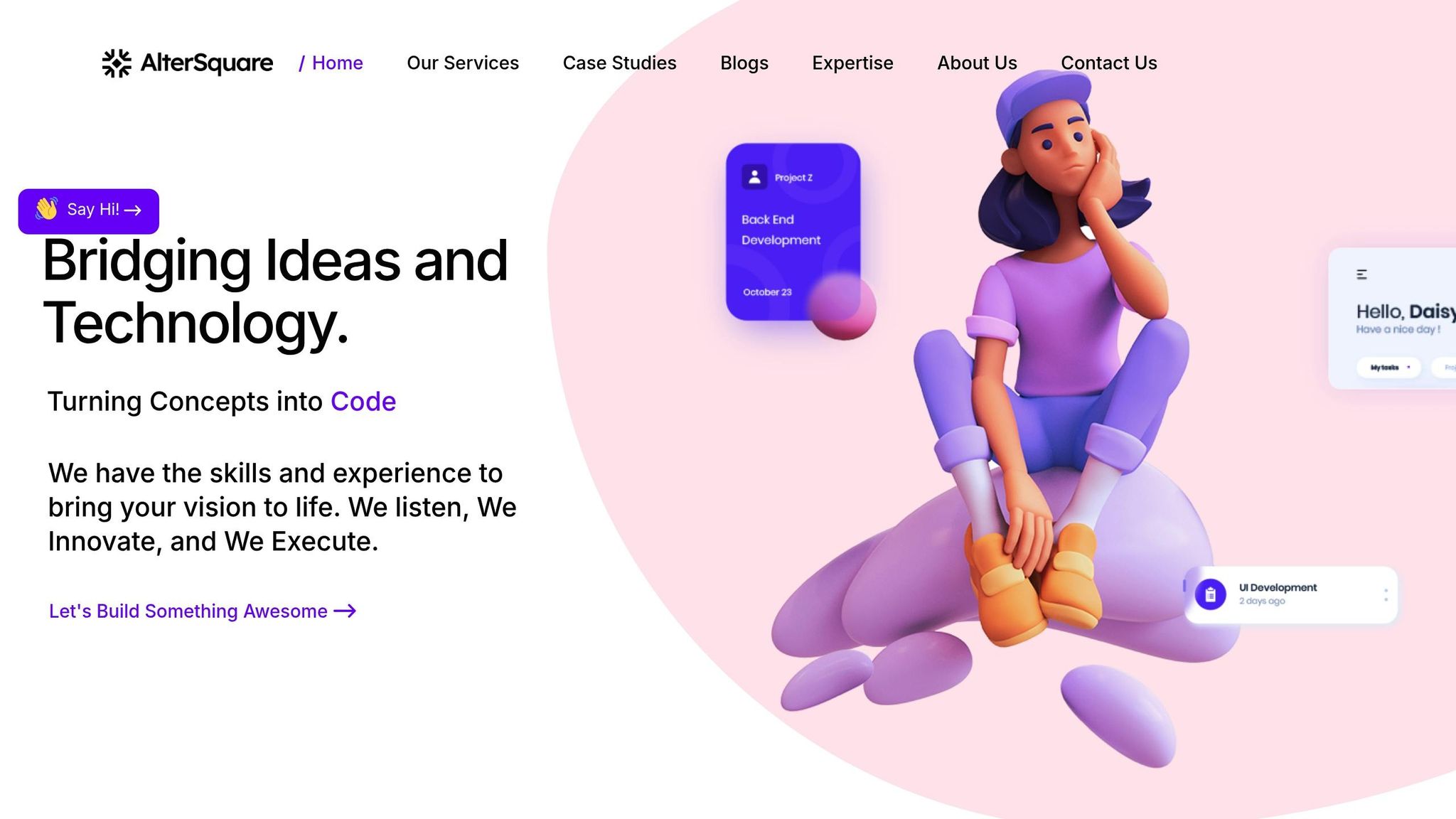Why Founders Underestimate the True Cost of Poor Onboarding – and How to Fix It
Taher Pardawala June 21, 2025
Poor onboarding can destroy your startup’s growth. It leads to high churn, frustrated users, and wasted money on customer acquisition. Here’s why it matters and how to fix it:
- 67% of churn happens during onboarding. Confusing processes drive users away fast.
- Time-to-Value (TTV) is critical. If users don’t see value quickly, they leave.
- Manual onboarding is unsustainable. It wastes time and creates inconsistent experiences.
- Retention beats acquisition. Acquiring new customers costs 5x more than keeping existing ones.
Fix it with these steps:
- Build self-serve walkthroughs that guide users effectively.
- Automate processes to reduce manual work and improve consistency.
- Track metrics like TTV, completion rates, and retention to measure success.
- Focus on long-term customer value by aligning onboarding with user needs.
Don’t let poor onboarding sabotage your success. A strong onboarding process can improve retention by 50% and boost revenue growth by 60%. Start prioritizing it now.
The 6-Step User Onboarding Framework Used to Activate Hundreds of Thousands of Users
Why Founders Underestimate Onboarding Costs
Even though it’s clear that poor onboarding can drain resources and stifle growth, many founders still fail to grasp its full impact. This often comes down to blind spots that obscure the true costs. Let’s dive into three common areas where founders miss the mark when it comes to onboarding expenses.
Missing Time-to-Value Metrics
One of the biggest oversights is ignoring time-to-value (TTV) – the time it takes for users to experience the meaningful benefits of a product. Without tracking this metric, it’s nearly impossible to gauge the success of your onboarding process or pinpoint areas for improvement.
"A slow time to value (TTV) isn’t just a missed opportunity – it’s a potential churn trigger." [2]
Here’s the reality: nearly two-thirds of users decide whether to stick with a product during their first interaction [2]. Many founders assume their product is intuitive enough for users to figure out on their own, but this assumption can be costly. Research shows that boosting customer retention by just 5% can increase profits by up to 95% [2]. Without a clear focus on TTV, you risk losing users before they even reach those pivotal "aha moments."
Consider the case of a project management SaaS platform. They revamped their onboarding process by adding a welcome tour and an easy-to-follow checklist, helping users set up their first project in just minutes. This approach allowed users to immediately see the platform’s value, reducing early churn and improving satisfaction [2].
When TTV isn’t prioritized, founders miss opportunities to remove friction, streamline onboarding, and focus on features that deliver immediate value. This not only inflates costs but also stunts growth.
Too Much Manual Work
Another common blind spot is relying too heavily on manual onboarding. Early-stage founders often believe they can personally guide each user through the process. While this might work for the first few customers, it quickly becomes unsustainable.
Manual onboarding leads to inconsistent user experiences and makes scaling nearly impossible. Founders often dismiss the need for automation, using the "minimum viable product (MVP) excuse" to justify sticking with basic, clunky processes. This mindset can result in missed opportunities to optimize onboarding and prevent revenue loss [1]. Worse, many founders fail to leverage data that could reveal where users hesitate or drop off [1].
"User onboarding is guiding the uninitiated all the way to their own personal promised lands." – Sam Hulick [1]
Without a standardized process, it’s hard to identify recurring pain points or eliminate friction. This lack of consistency not only frustrates users but also increases operational costs and hinders growth.
Ignoring Long-Term Customer Value
The most expensive blind spot is failing to connect onboarding quality with long-term customer value. Founders often focus on short-term metrics like sign-ups or initial feature usage, while overlooking how onboarding impacts lifetime value (LTV).
The numbers are sobering: acquiring a new customer costs five times more than retaining an existing one [4]. Poor onboarding essentially wastes the money spent on customer acquisition and reduces the likelihood of upsells, as frustrated users are less likely to expand their usage.
"Neuroscience explains that we worry about the fear of the unknown, the anxiety of what will happen, and then we question value (am I getting out of this what I’m expecting?). If you’re not reinforcing value or providing antidotes for fear or anxiety, it causes a rough renewal, a customer that doesn’t evangelize you to others, and word quickly spreads when your experience is not fantastic." – Harris Clarke, COO of GUIDEcx [5]
The consequences ripple outward. Poor onboarding puts additional strain on internal teams – sales, customer success, and product teams end up spending more time on troubleshooting instead of driving growth [4]. Support costs also soar as confused users flood help desks with basic questions.
The harsh truth is evident in mobile app data: 89% of daily active users are lost within the first seven days after installation, and 95% disappear within 30 days [5]. While SaaS products might have a longer timeline, the principle remains the same – poor onboarding creates a leaky bucket that no amount of customer acquisition can fix.
Founders who ignore these long-term effects often find themselves stuck in a costly cycle. High churn forces them to spend more on acquiring new customers, leaving less room to improve onboarding and the product itself. Breaking free from this cycle requires recognizing that onboarding isn’t just a feature – it’s a critical investment in the financial health and growth of your company.
How Bad Onboarding Hurts Startups
Poor onboarding doesn’t just create a few bumps in the road – it can derail startups entirely. It slows down how quickly customers see value, drives up support costs, and increases churn. Let’s dive into how these issues create both operational and financial headaches for startups.
Slower Time-to-Value and Product Adoption
When onboarding is ineffective, it delays the moment customers experience the value of your product. For startups relying on consumption-based models, this delay doesn’t just frustrate customers – it stalls revenue. If users aren’t actively engaging with your product, your income from usage is stuck in neutral.
"In consumption-based SaaS models, onboarding isn’t just a box to check. It’s the fuse that ignites the revenue engine. Until your customer is up and running, you’re stuck in limbo and so is your revenue." [6]
Here’s the reality: over 50% of downloaded apps are uninstalled within the first 30 days [7], and nearly 80% of free trial users never convert to paid customers [7]. Worse, 75% of users drop a product if they can’t figure it out within a week [9], and 80% uninstall apps because they don’t understand how to use them [9]. For startups, the window to prove value is shockingly small.
"Time to value (TTV) means this: from the first point of use, until the moment the end-user realizes a product’s value. TTV has a dramatic impact on product adoption and therefore continued use." – Courtney Elyse Jones, Head of Client Insights & Success, The Alliance [8]
Confusing or overly manual onboarding drags out this critical time-to-value, shrinking the margin for error. Research shows that shortening the time it takes for customers to realize value can boost satisfaction by 10% to 30% [7]. For startups, that difference can mean survival or failure.
Higher Support Costs
When onboarding falls short, support teams bear the brunt of the fallout. Users overwhelmed by a confusing setup process flood support channels with basic questions – issues that could’ve been avoided with better onboarding.
"Poor onboarding doesn’t just frustrate customers – it can quietly drain your business in ways you might not even realize." [4]
This overload forces startups to hire more support staff, raising costs [4]. Meanwhile, the sheer volume of preventable inquiries can burn out existing team members [4]. For lean startup teams, every hour spent answering repetitive questions is an hour lost on growth-focused work. A strong onboarding process, on the other hand, reduces these unnecessary interactions, allowing support teams to focus on solving complex, high-value problems [4].
Beyond just inflating costs, poor onboarding also damages customer loyalty and stunts revenue growth.
More Churn and Lost Upsell Chances
Bad onboarding doesn’t just frustrate – it results in lost customers and missed revenue opportunities. When users don’t grasp your product’s value right away, they’re unlikely to stick around long enough to explore advanced features or consider upgrades. In fact, 23% of churn is directly tied to ineffective onboarding [10].
"It’s extremely important – the onboarding stage sets the tone of the ongoing relationship and is key to developing deep customer relationships. Plus, ensuring success expectations are set and worked towards, to then ultimately demonstrate product/service value and keep the customer successful and renewing. This stage of the customer journey should not be overlooked or underestimated." – Melanie Lawn, Chief Customer Officer at Forecast [8]
The ripple effects don’t stop there. Customers who struggle during onboarding often never move beyond basic usage, missing out on features that could justify a higher-tier plan or additional purchases. 55% of customers report abandoning products they don’t understand [9], which means the opportunity to upsell or expand revenue disappears before it even begins.
"Onboarding is huge in deciding the fate of customers. If you don’t successfully get customers deployed and quickly demonstrate value there’s a huge churn risk. I definitely feel like customers are less patient than they used to be, given they are under a lot of economic pressure." – Michelle Wideman, Chief Customer Officer at Silverfort [8]
High churn forces startups to pour more money into customer acquisition just to replace lost users. This leaves fewer resources to invest in improving the product or fixing the very onboarding issues causing the problem in the first place. It’s a vicious cycle that startups can’t afford to ignore.
sbb-itb-51b9a02
How to Fix Onboarding Problems
If onboarding feels like a hurdle rather than a stepping stone, it’s time to make some changes. By addressing common pain points, you can turn onboarding into a seamless experience that boosts user engagement and retention. Let’s take a closer look at how to tackle these challenges.
Building Better Self-Serve Walkthroughs
Today, users expect to guide themselves through onboarding. In fact, 79% of customers look for self-service tools, and 67% prefer them over speaking with a representative [13].
Interactive walkthroughs work better than static tours. A great example is Attention Insight, which saw a 47% boost in new user activation by using guided prompts that encouraged users to perform key actions [11].
"Userpilot offered us the most content creation possibilities combined with the most extensive analytics for an affordable price." – Darius Jokubaitis, CMO at Attention Insight [11]
Kontentino also shifted gears, replacing a lackluster product tour with an interactive walkthrough. This change, which started with a welcome survey to personalize the experience, led to a 10% increase in user activation within the first month [11]. Similarly, Kommunicate.io saw 86% of users complete the chat widget customization step, resulting in a 3% uptick in feature usage [11].
Keep it short and skippable. Users value their time. Break complex workflows into manageable steps and always provide an option to skip or exit. Adding engaging visuals can also make the experience more enjoyable.
Tailor onboarding to different user groups. One-size-fits-all doesn’t cut it. Create walkthroughs that cater to specific user personas or behaviors. For example, Appcues revamped its onboarding to guide users toward features that matched their unique needs, rather than forcing everyone toward a single milestone [12].
"We recently rolled out a new trial experience for Appcues. Our goal was to personalize the onboarding for each user and highlight the exact features that would bring value." – Meg Gowell, Director of Growth @ Appcues [12]
While self-serve tools are great, a smooth handoff between teams can make the process even better.
Creating Smooth Customer-Success Handoffs
The transition from sales to customer success is a critical moment. A rocky handoff can confuse customers and set the wrong expectations, leaving them frustrated.
Define roles and share responsibility. Make sure both teams know exactly what they’re responsible for. A shared handoff document can help, capturing key details like customer pain points, goals, and agreed outcomes [14].
Combine written notes with quick meetings. A brief internal meeting allows teams to clarify any questions and provide context beyond what’s written down.
Use templates for consistency. Standardize the handoff process with templates that include key information like an onboarding timeline, customer success metrics, and escalation points. High-touch customers may need more detailed handoffs compared to those on self-service plans [14].
Be transparent with customers. Clearly communicate who their new contact is, what the next steps are, and how communication will work moving forward. A little clarity goes a long way in building trust.
Consider introducing a "graduation checklist" to mark the end of onboarding. This not only gives customers a sense of accomplishment but also signals when ongoing support begins [15].
Once your onboarding process is running smoothly, it’s time to measure its impact.
Measuring and Improving Onboarding ROI
You can’t fix what you don’t track. Monitoring the right metrics helps identify problem areas, allocate resources effectively, and prove the value of your onboarding efforts.
Track completion rates, time-to-value, and user satisfaction. Use in-app surveys or microsurveys to gather feedback. Keep an eye on feature adoption rates to ensure users are engaging with your product post-onboarding.
"We really benefit from the analytics so we know what our users are interacting with. Also, product tours are very easy to build." – Irina C., Product-Led Growth Marketer at 123FormBuilder [11]
Understand the financial impact. Companies with strong onboarding processes see a 70% boost in productivity and an 82% improvement in new hire retention [3]. Additionally, successful onboarding programs can deliver a 200-300% return on investment within the first year [16]. Track metrics like customer lifetime value, churn rates, and support ticket volume to calculate ROI.
Create feedback loops for ongoing improvement. Regularly analyze your onboarding metrics to spot trends and areas for improvement. A/B testing can help you refine your approach, whether it’s tweaking UI elements or tailoring content for different user segments.
Automate data collection. Use analytics tools to track user behavior in real-time, reducing the need for manual reporting while providing actionable insights.
How AlterSquare Helps Startups Improve Onboarding

Creating a seamless onboarding experience doesn’t happen by chance – it requires a solid mix of technical expertise and strategic planning. AlterSquare works with startups to design products that guide users effortlessly toward success, tackling the core challenges that often result in clunky onboarding. Their approach builds on the broader strategies for improving onboarding discussed earlier.
AlterSquare’s I.D.E.A.L Delivery Framework
AlterSquare’s I.D.E.A.L Delivery Framework is designed to address onboarding challenges right from the development stage.
The framework focuses on delivering minimum viable products (MVPs) within 90 days, prioritizing scalable architecture, fast feature rollouts, and comprehensive market testing. By doing so, startups can minimize risks, adapt quickly based on feedback, and refine their onboarding processes early in the product’s lifecycle.
With rapid prototyping, startups can experiment with various onboarding strategies before committing to a full build. This helps identify pain points early, enabling cost-efficient fixes.
The framework’s scalable architecture ensures that as your user base grows, your onboarding system keeps up without hiccups. This avoids the all-too-common scenario of startups scrambling to rebuild their onboarding infrastructure as they scale.
Through structured testing cycles and milestone tracking, every onboarding element is thoroughly vetted before reaching users. This reduces the chances of launching with confusing flows or broken walkthroughs that could leave a poor first impression.
Key Features for Onboarding Success
AlterSquare focuses on features that directly enhance the onboarding experience, driving better user adoption and engagement from the start.
Intuitive user flows are baked into the design process, making it easier for users to navigate the product without frustration. At the same time, built-in analytics tools track key onboarding metrics like user behavior, completion rates, and drop-off points. By understanding how users think and what they expect, AlterSquare designs interfaces that feel logical and familiar, eliminating the need for excessive explanations or tutorials.
Instead of retrofitting analytics into an existing product, AlterSquare integrates these tools from the beginning. This ensures clean, actionable data to refine the onboarding experience.
Custom UI/UX design services align onboarding with your brand and product flow, creating a seamless transition from marketing to the actual product. This cohesive experience helps build trust and encourages users to stick around.
With an integrated product management approach, onboarding is considered at every stage of feature development. This ensures that new features are designed with user discovery and adoption in mind, avoiding the common mistake of building core features without considering how users will engage with them.
Finally, post-launch support allows startups to make real-time improvements to their onboarding process based on user feedback. Instead of waiting through lengthy development cycles, startups can quickly adapt their onboarding experience to meet evolving needs. This proactive approach directly addresses the costly issues that arise from poor onboarding, such as user drop-offs and negative first impressions.
Conclusion: Making Onboarding a Priority for Long-Term Success
Effective onboarding isn’t just a box to check – it’s a cornerstone of sustainable business growth. Startups that prioritize it see an 82% boost in retention and over a 70% increase in productivity [3]. On the flip side, poor onboarding can be a costly mistake, with employee replacement expenses ranging from 16% to 213% of their annual salary [3].
The hidden expenses add up fast – think delayed value delivery, a surge in support tickets, higher churn rates, and missed upsell opportunities. But here’s the silver lining: these issues can be resolved with the right strategy and a commitment to improvement.
Onboarding isn’t a one-time event; it’s an ongoing process. Research shows that 69% of employees are more likely to stay for three years if they experience a strong onboarding program [3]. This means the onboarding journey not only fosters immediate engagement but also sets the stage for long-term customer loyalty and overall growth.
To make your onboarding efforts count, focus on tracking meaningful metrics. Measure time-to-value, monitor the completion rates of your self-serve guides, and calculate the ROI of your onboarding initiatives. Incorporate 30-60-90 day check-ins to collect feedback and refine your approach [3]. Keep in mind that 90% of employees decide whether to stay within the first six months [18], making those early interactions vital.
"Measuring the ROI of the onboarding program is not just about numbers; it’s about demonstrating the tangible value it brings to the organization." – Dr. Charles Tawk, Partner @Meirc Training & Consulting [17]
FAQs
What are the best ways to reduce time-to-value (TTV) during onboarding?
Reducing time-to-value (TTV) during onboarding is all about helping users experience the benefits of your product as quickly as possible. Here are some strategies to make that happen:
- Leverage in-app onboarding tools such as walkthroughs and guided tours to help users accomplish specific tasks more efficiently.
- Provide personalized concierge onboarding to offer hands-on assistance and customize the experience based on individual needs.
- Simplify the process by breaking it into phases, delivering value step-by-step, and offering self-service resources like checklists or setup wizards.
These approaches not only make onboarding smoother but also boost user satisfaction while driving a better return on investment (ROI).
How does automation help startups streamline and scale their onboarding process?
Automation simplifies the onboarding process for startups by standardizing workflows and cutting down on manual tasks. This ensures that every new customer or employee goes through a consistent and smooth onboarding experience, reducing the chances of errors and making sure nothing important gets overlooked.
On top of that, automated tools enable startups to onboard multiple users at once without sacrificing quality. This not only speeds up the time-to-value but also supports growth without overwhelming the team. It’s an essential approach for scaling efficiently while keeping the user experience top-notch.
Why is it important to connect onboarding with long-term customer value, and how can startups evaluate its success?
Connecting onboarding to long-term customer value is crucial because it plays a major role in improving retention, boosting satisfaction, and driving revenue growth. When done right, onboarding can lower churn, shorten the time-to-value, and increase Customer Lifetime Value (CLV) – all essential for building a thriving business.
Startups can measure the effectiveness of their onboarding process by monitoring a few key metrics: CLV, customer engagement, retention rates, and the LTV-to-CAC ratio (Customer Lifetime Value to Customer Acquisition Cost). A solid LTV-to-CAC ratio – ideally 3:1 or higher – shows that your onboarding efforts are delivering lasting, impactful results. These metrics help paint a clear picture of how onboarding supports customer loyalty and fuels long-term business growth.








Leave a Reply